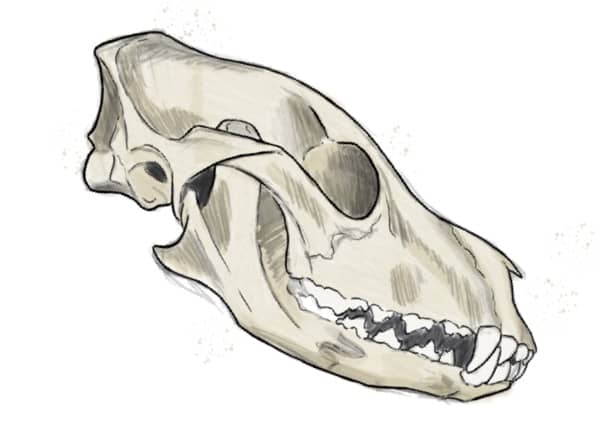The fox
You don’t see it during the day, but at night the fox crosses Tapijn unabashedly. We have already been able to film foxes in various locations within Tapijn using our wildlife cameras. We have spotted a male fox (dog), a female fox (vixen), and fox cubs. They regularly make a tour of the grounds in search of food or to mark their territory. Along the Jeker on the side of the Tapijn Garden, there is a fox track. This is probably their connecting road with the Jeker valley further on.
Characteristics:
the fox
The fox is particularly active at night, but sometimes it is also about early in the morning. You can recognise it by its dog-like appearance. It is not much bigger than a large cat, even though it sometimes looks bigger because of his thick coat and tail, especially in winter. The colour of its coat varies from red to orange and brownish-grey. Its underside is a much lighter grey, sometimes almost white. Foxes make many different sounds, depending on the situation in which they find themselves. They can let out short yaps and long, plaintive calls, they can shriek, growl, bark, and make gekkering sounds.

The fox

Reproduction:
A male and female often share a territory and have cubs once a year. They mate between December and January. After a gestation period of about 53 days, the cubs are usually born in a small cave in late March – early April. The number of cubs can vary from 1 to 14, but in most cases a vixen has 4 or 5 cubs. The cubs are dark greyish-brown in colour. After about 4 weeks, the cubs go outside the den for the first time and are taken to a larger den by their mother. From that time on, they will also eat solid food, provided by the male. However, he does not live in the burrow. From mid-June, the cubs usually live above ground, and from the end of September they start looking for their own territory.
Diet:
Foxes are opportunists. That is one of the reasons why they do so well in the city. They are not very picky when it comes to food; small rodents, lagomorphs, birds, insects, eggs, berries, fallen fruit, bait, and waste. Hunting small rodents is mainly done by ear. But they can also sneak up on their prey, sprint after prey, empty bird nests, pick berries… the fox is an all-rounder.

Photo - Fox in Tapijn
Relationship
with humans
Maastricht is certainly not the only city with at least one fox so close to or even in the city centre. Foxes benefit from the presence of humans. Wherever there are humans, there is waste, and there may well be a tasty bite to eat. The rats that benefit from the presence of humans can also be prey for the city fox. In addition, human buildings can provide foxes with hiding places and even with nesting places (the nesting place of a fox is called a ‘burrow’). For example, in 2016 a female fox and her cubs supposedly lived under the old sports hall within Tapijn. We don’t know if she found another place to stay within Tapijn after the demolition of the sports hall.
3 facts about
the fox
- It takes 12 days for a fox cub to open its eyes for the first time. In addition, the little foxes stay in the den where they were born for the first four weeks of their life.
- If the fox is in danger, it can reach a top speed of fifty kilometers per hour during a sprint. He can also jump well: up to five meters and two meters high.
- Foxes can make a lot of different sounds, from shrill yapping to peacock-like calling and from small barks to clucking sounds. In addition, they also make extensive use of body language to communicate.
Discover Tapijn
There is much more to see and do in Tapijn. Do you want to know what can be seen in which places? Take a look around on our interactive map.
